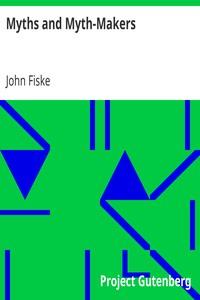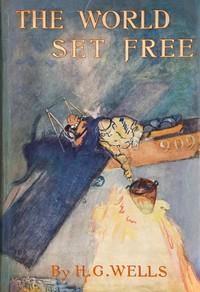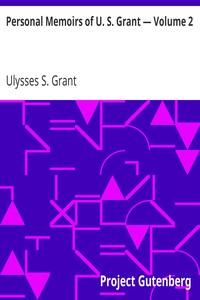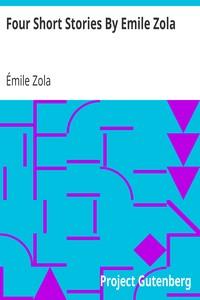Read this ebook for free! No credit card needed, absolutely nothing to pay.
Words: 72110 in 11 pages
This is an ebook sharing website. You can read the uploaded ebooks for free here. No credit cards needed, nothing to pay. If you want to own a digital copy of the ebook, or want to read offline with your favorite ebook-reader, then you can choose to buy and download the ebook.


: Myths and Myth-Makers Old Tales and Superstitions Interpreted by Comparative Mythology by Fiske John - Folklore; Mythology
NOTE
MYTHS AND MYTH-MAKERS.
FEW mediaeval heroes are so widely known as William Tell. His exploits have been celebrated by one of the greatest poets and one of the most popular musicians of modern times. They are doubtless familiar to many who have never heard of Stauffacher or Winkelried, who are quite ignorant of the prowess of Roland, and to whom Arthur and Lancelot, nay, even Charlemagne, are but empty names.
Nevertheless, in spite of his vast reputation, it is very likely that no such person as William Tell ever existed, and it is certain that the story of his shooting the apple from his son's head has no historical value whatever. In spite of the wrath of unlearned but patriotic Swiss, especially of those of the cicerone class, this conclusion is forced upon us as soon as we begin to study the legend in accordance with the canons of modern historical criticism. It is useless to point to Tell's lime-tree, standing to-day in the centre of the market-place at Altdorf, or to quote for our confusion his crossbow preserved in the arsenal at Zurich, as unimpeachable witnesses to the truth of the story. It is in vain that we are told, "The bricks are alive to this day to testify to it; therefore, deny it not." These proofs are not more valid than the handkerchief of St. Veronica, or the fragments of the true cross. For if relics are to be received as evidence, we must needs admit the truth of every miracle narrated by the Bollandists.
The earliest work which makes any allusion to the adventures of William Tell is the chronicle of the younger Melchior Russ, written in 1482. As the shooting of the apple was supposed to have taken place in 1296, this leaves an interval of one hundred and eighty-six years, during which neither a Tell, nor a William, nor the apple, nor the cruelty of Gessler, received any mention. It may also be observed, parenthetically, that the charters of Kussenach, when examined, show that no man by the name of Gessler ever ruled there. The chroniclers of the fifteenth century, Faber and Hammerlin, who minutely describe the tyrannical acts by which the Duke of Austria goaded the Swiss to rebellion, do not once mention Tell's name, or betray the slightest acquaintance with his exploits or with his existence. In the Zurich chronicle of 1479 he is not alluded to. But we have still better negative evidence. John of Winterthur, one of the best chroniclers of the Middle Ages, was living at the time of the battle of Morgarten , at which his father was present. He tells us how, on the evening of that dreadful day, he saw Duke Leopold himself in his flight from the fatal field, half dead with fear. He describes, with the loving minuteness of a contemporary, all the incidents of the Swiss revolution, but nowhere does he say a word about William Tell. This is sufficiently conclusive. These mediaeval chroniclers, who never failed to go out of their way after a bit of the epigrammatic and marvellous, who thought far more of a pointed story than of historical credibility, would never have kept silent about the adventures of Tell, if they had known anything about them.
After this, it is not surprising to find that no two authors who describe the deeds of William Tell agree in the details of topography and chronology. Such discrepancies never fail to confront us when we leave the solid ground of history and begin to deal with floating legends. Yet, if the story be not historical, what could have been its origin? To answer this question we must considerably expand the discussion.
The first author of any celebrity who doubted the story of William Tell was Guillimann, in his work on Swiss Antiquities, published in 1598. He calls the story a pure fable, but, nevertheless, eating his words, concludes by proclaiming his belief in it, because the tale is so popular! Undoubtedly he acted a wise part; for, in 1760, as we are told, Uriel Freudenberger was condemned by the canton of Uri to be burnt alive, for publishing his opinion that the legend of Tell had a Danish origin.
The bold heretic was substantially right, however, like so many other heretics, earlier and later. The Danish account of Tell is given as follows, by Saxo Grammaticus:--
"A certain Palnatoki, for some time among King Harold's body-guard, had made his bravery odious to very many of his fellow-soldiers by the zeal with which he surpassed them in the discharge of his duty. This man once, when talking tipsily over his cups, had boasted that he was so skilled an archer that he could hit the smallest apple placed a long way off on a wand at the first shot; which talk, caught up at first by the ears of backbiters, soon came to the hearing of the king. Now, mark how the wickedness of the king turned the confidence of the sire to the peril of the son, by commanding that this dearest pledge of his life should be placed instead of the wand, with a threat that, unless the author of this promise could strike off the apple at the first flight of the arrow, he should pay the penalty of his empty boasting by the loss of his head. The king's command forced the soldier to perform more than he had promised, and what he had said, reported, by the tongues of slanderers, bound him to accomplish what he had NOT said. Yet did not his sterling courage, though caught in the snare of slander, suffer him to lay aside his firmness of heart; nay, he accepted the trial the more readily because it was hard. So Palnatoki warned the boy urgently when he took his stand to await the coming of the hurtling arrow with calm ears and unbent head, lest, by a slight turn of his body, he should defeat the practised skill of the bowman; and, taking further counsel to prevent his fear, he turned away his face, lest he should be scared at the sight of the weapon. Then, taking three arrows from the quiver, he struck the mark given him with the first he fitted to the string..... But Palnatoki, when asked by the king why he had taken more arrows from the quiver, when it had been settled that he should only try the fortune of the bow ONCE, made answer, 'That I might avenge on thee the swerving of the first by the points of the rest, lest perchance my innocence might have been punished, while your violence escaped scot-free.'"
This ruthless king is none other than the famous Harold Blue-tooth, and the occurrence is placed by Saxo in the year 950. But the story appears not only in Denmark, but in England, in Norway, in Finland and Russia, and in Persia, and there is some reason for supposing that it was known in India. In Norway we have the adventures of Pansa the Splay-footed, and of Hemingr, a vassal of Harold Hardrada, who invaded England in 1066. In Iceland there is the kindred legend of Egil brother of Wayland Smith, the Norse Vulcan. In England there is the ballad of William of Cloudeslee, which supplied Scott with many details of the archery scene in "Ivanhoe." Here, says the dauntless bowman,
"I have a sonne seven years old; Hee is to me full deere; I will tye him to a stake-- All shall see him that bee here-- And lay an apple upon his head, And goe six paces him froe, And I myself with a broad arrowe Shall cleave the apple in towe."
In the Malleus Maleficarum a similar story is told Puncher, a famous magician on the Upper Rhine. The great ethnologist Castren dug up the same legend in Finland. It is common, as Dr. Dasent observes, to the Turks and Mongolians; "and a legend of the wild Samoyeds, who never heard of Tell or saw a book in their lives relates it, chapter and verse, of one of their marksmen." Finally, in the Persian poem of Farid-Uddin Attar, born in 1119, we read a story of a prince who shoots an apple from the head of a beloved page. In all these stories, names and motives of course differ; but all contain the same essential incidents. It is always an unerring archer who, at the capricious command of a tyrant, shoots from the head of some one dear to him a small object, be it an apple, a nut, or a piece of coin. The archer always provides himself with a second arrow, and, when questioned as to the use he intended to make of his extra weapon, the invariable reply is, "To kill thee, tyrant, had I slain my son." Now, when a marvellous occurrence is said to have happened everywhere, we may feel sure that it never happened anywhere. Popular fancies propagate themselves indefinitely, but historical events, especially the striking and dramatic ones, are rarely repeated. The facts here collected lead inevitably to the conclusion that the Tell myth was known, in its general features, to our Aryan ancestors, before ever they left their primitive dwelling-place in Central Asia.
Free books android app tbrJar TBR JAR Read Free books online gutenberg
More posts by @FreeBooks

: The World Set Free by Wells H G Herbert George - War stories; Imaginary wars and battles Fiction; Nuclear warfare Fiction Science Fiction








